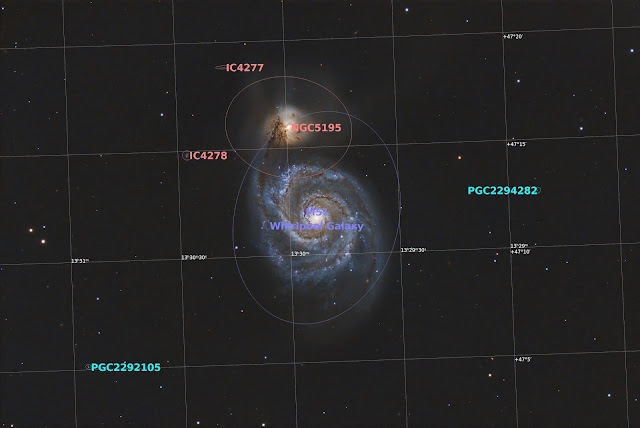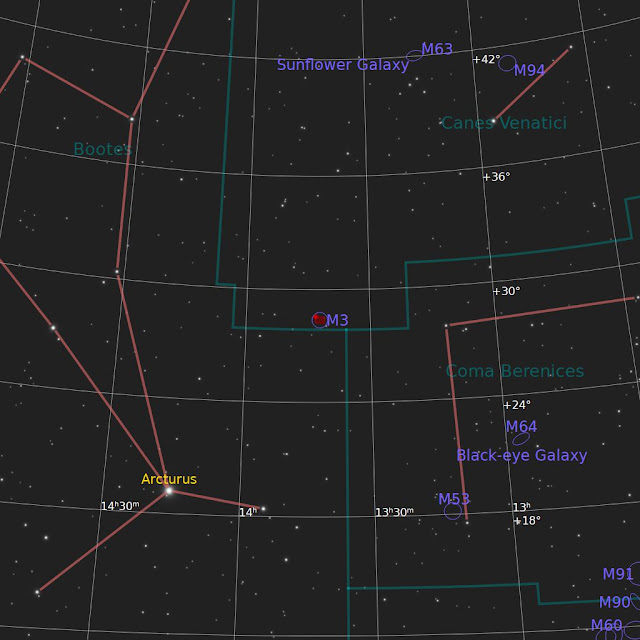Imaging in the heart of the Milky Way ...
I have not imaged with my home rig for several months. Been imaging with the club's scopes at the observatory and life has been pretty crazy (let's not talk about the weather). Saturday 7/6 was no exception. Our club had a Public Night at our observatory. I couldn't attend due to a family commitment. Fortunately, we got home in time to do some imaging. I live in farm country and have reasonably good skies. Unfortunately, I have a lousy horizon due to the trees. So, I set up across the street in my neighbor's backyard. Their yard borders their farm fields, so the horizon is amazing. This allowed me to go for M8 & M20, something I could never get from my yard.
I got imaging so late; I'm calling this on a Sunday 7/7 image. I had to stop multiple times due to clouds. Ended up with just under 2 hours of data (114 subs at 60 sec each). Really pleased with the result. Especially for a target that is so low in the sky here.
 |
| M8, M20, and friends from across the street from my house. |
Processing:
All pre and post processing was performed in PixInsight. Pre-Processing: All subs were visually inspected with Blink and subs with issues were removed. All light Frames, Flats, Darks and Dark flats were loaded into WBPP. Linear Post Processing: Background extraction was performed with GraXpert followed by BXT (correct only). SPCC was used for Color Calibration followed by a full application of BXT. Noise was reduced with NXT. The image was made non-linear with HT. Non-linear Post Processing: Stars were removed with StarXT. Stars: Saturation was increased with CT. Starless: Saturation was increased with CT. LHE was applied at 3 Kernel sizes. Unsharp mask was applied and MMT was used to increase sharpness. The Stars and Starless images were combined with Pixel Math to produce the final image. I ended up with 2 versions one bright image and a darker version. I liked elements of each, bit was not totally satisfied with either. I ended blending both images (70% dark with 30% bright) to get the final image.
What is it?
There is a lot going on in this image. The scope was pointed into the heart of the Milky Way. Going to focus on the three Messier objects in the image.
Messier 8 (M8) The Lagoon Nebula. M8 is a large star forming region, some dark nebula, and a star cluster. This is giant glowing cloud of interstellar dust where stars are forming and have been formed (the star cluster).
Messier 20 (M20) The Trifid Nebula. M20is a unique combination of a star cluster, emission nebula, dark nebula, and a reflection nebula. It is called the Trifid nebula due to the tree lobed appearance.
Messier 21 (M21). M21 is an open star cluster located near M20. This is a relatively young cluster at about 4.6 million years old.
 |
| An annotated image of M8 & M20. |
How Big is it?
M8 has a size of 9o x 40 arcminutes (1 degree is 60 arcminutes) on the night sky. It is 113.6 light-years (ly) in diameter.
M20 has a size of 29 x27 arcminutes (1 degree is 60 arcminutes) on the night sky. It is 43.9 light-years (ly) in diameter.
M21 has a size of 14 arcminutes (1 degree is 60 arcminutes) on the night sky. It is 20 light-years (ly) in diameter.
How Far is it?
M8 is located about 4,300 light-years (ly) from Earth in the constellation Sagittarius.
M20 is located about 5,200 light-years (ly) from Earth in the constellation Sagittarius.
M21 is located about 3,900 light-years (ly) from Earth in the constellation Sagittarius.
How to find it?
The lagoon is naked eye visible in dark sky locations. All three objects are located in the constellation Sagittarius, which is low in the South for Northern Hemisphere stargazers in the summer. Find the Teapot, they are located above (North) of the Spout of the Teapot.
 |
| A finder chart for M8 & M20 |
























